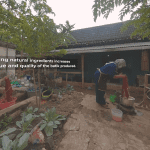Harnessing the Potential of Digital Finance for Women
Sixty-two percent of the world’s adult population now has access to a bank account. Digital finance – financial products and services offered through mobile phones and other digital interfaces – is seen as an important way of increasing financial inclusion further across the world. Digital financial services are especially appealing in developing countries as they can serve populations that were previously unreachable by traditional brick-and-mortar bank branches. Indeed, in sub-Saharan Africa, 12 percent of adults have mobile money accounts, as compared with the global average of 2 percent of adults, and 45 percent of African adults have only a mobile money account and no other form of financial account access.
However, there are two problems with taking the digital revolution at face value.
Firstly, whilst overall financial and digital financial inclusion are improving, gender gaps are increasing. In Bangladesh, the gender gap in financial inclusion tripled between 2014 and 2015, driven by unequal growth in mobile money. Bangladeshi men are more than twice as likely as women to have access to mobile money.
Secondly, financial inclusion is about more than just improving access to finance. Traditional metrics tend to focus on whether financial services can be accessed and used to meet financial needs. But through our recent work, we have found that measuring agency – the control individuals have over the use of financial products and services – is critical to fully understanding the extent to which financial inclusion can be truly empowering.
To ensure that women are not left behind by the digital revolution in financial services, we need to simultaneously improve women’s access to digital financial services, address the issues women face when trying to use these services, and tackle gender norms around financial independence.
Gendered barriers in access to mobile money
Whilst mobile money can reach presently unbanked populations at scale, we cannot be blind to gendered dimensions of agent-intermediated transactions. In India, 91 percent of agents are male, whilst in Pakistan, agents are exclusively male. The male dominance of mobile agent networks can intimidate women who feel that their security and privacy is compromised by sharing personal information with male agents.
In the near-term, more gender-balanced agent networks in South Asia may be unfeasible, but more can be done to improve their approach to gender sensitivity. For example, transaction processes can be modified by mobile money providers to limit the amount of personal information women must share with agents. Secondly, there is scope to leverage existing networks that women may be more comfortable with – for example, microfinance loan officer networks – and use them as recruitment pools for more gender-sensitive mobile money agents.
Gendered barriers in mobile money usage
According to 2017 Dalberg survey data, 17 percent of women in Bangladesh say they lack the skills and confidence to use a mobile money account. Intermedia data found that two-thirds of Bangladeshi women have low digital literacy skills versus less than half of men. Factors such as the combination of English language phones and phone menus, which require the completion of selections within 90 seconds, can present significant challenges for women to integrate mobile money into their financial lives.
To address this issue, mobile money network providers must collect sex-disaggregated data to know the composition of their customer base, before taking active measures to address the use of mobile money among female customers. One such measure that has proven effective is recruiting adolescent girls to improve digital and financial literacy. BRAC, now one of the world’s largest NGOs but founded originally in Bangladesh, has piloted programs that teach girls how to set up mobile money accounts as a means of building the digital capabilities of their mothers.
Gendered barriers in agency over mobile money
Many women share mobile phone ownership, which understandably has huge implications for how and when mobile phones are used. In Indonesia, for example, 77 percent of women have access to a phone but only 58 percent own a phone, suggesting access is often mediated by intra-household power dynamics that govern shared phone usage. According to Dalberg survey data, there is a clear relationship between who has knowledge of women’s mobile money accounts and who has control over their usage. If a husband is aware of his wife’s account, he is much more likely to control how and when the money is spent.
Insights from focus group discussions suggest growing awareness of agency issues, insofar as adolescent girls perceive future husbands as critical gatekeepers of change. Lessons can be learned from approaches by NGOs that use key community leaders, for example, imams and imams’ wives, to engage wider communities on gender-based violence issues as a replicable strategy in the financial inclusion space.
Mobile money remains a significant opportunity space for financial inclusion in developing countries. However, we must apply a gender lens to the full spectrum of barriers in accessing, using and controlling digital finance to ensure its potential is harnessed by women for their economic empowerment.
Madji Sock is Dalberg Advisors’ global operations partner and leads the Dakar office.
Katrina Kwan is a senior consultant in Dalberg’s Dakar office.
Photo by Sayma Islam of WorldFish via Flickr
- Categories
- Finance



